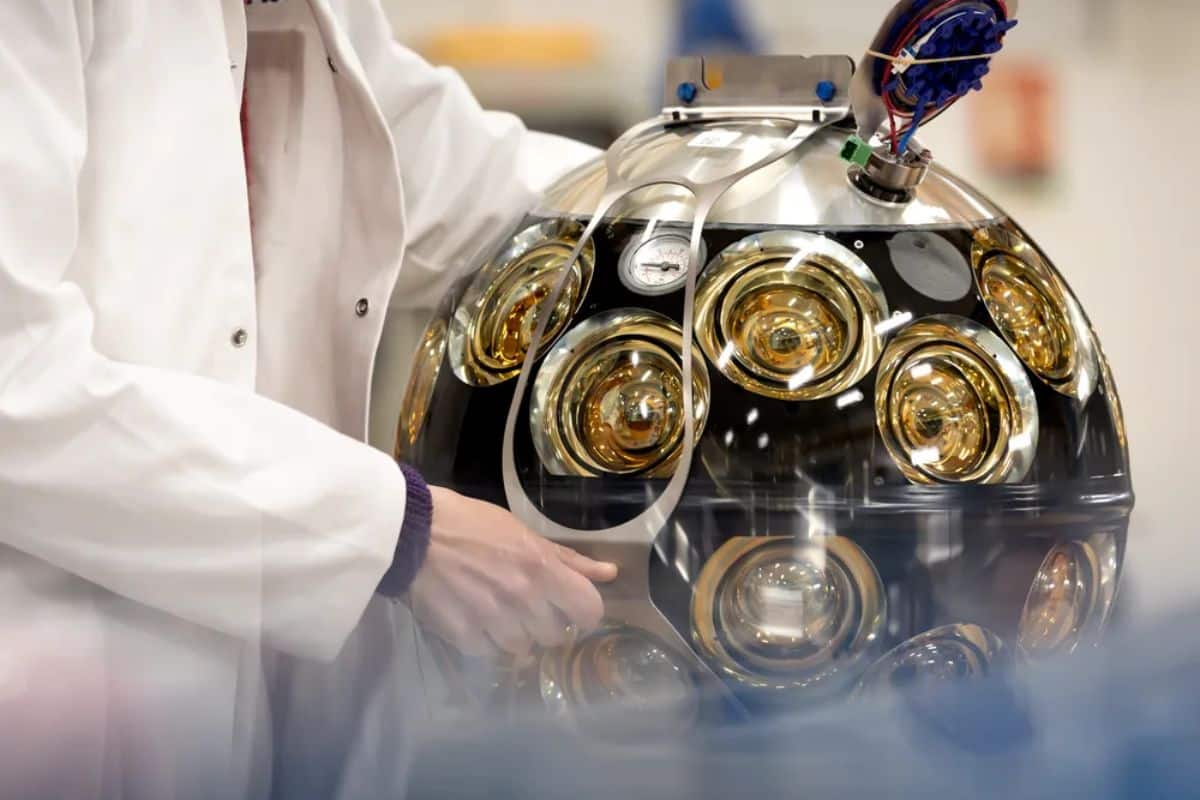
Researchers have detected one of the most intense neutrinos ever recorded in the Mediterranean Sea, representing a significant advancement in the field of particle physics. This rare KM3-230213A neutrino, identified by the KM3NeT underwater observatory, possesses an astonishing energy level of 220 PeV, positioning it among the highest energy particles ever observed.
A Submerged Telescope Unveils the Unthinkable
Unlike typical particles, neutrinos are extremely elusive and can traverse matter without any interaction. The identification of such a high-energy phenomenon as KM3-230213A demanded remarkable accuracy. The KM3NeT facility, located deep beneath the ocean’s surface, utilizes a network of sensitive photomultiplier sensors to detect the dim blue light produced when neutrinos collide with water molecules.
Rosa Coniglione, a scientist from the INFN National Institute for Nuclear Physics, remarked, “Neutrinos are among the most enigmatic elementary particles. They carry no electric charge, have almost negligible mass, and interact only subtly with matter, making them unique cosmic messengers.”
Situated off the coast of Sicily, the ARCA detector recorded a singular muon, a secondary outcome resulting from the neutrino’s interaction, validating the event’s cosmic origin. This landmark event signifies the first detection of a neutrino with such extraordinary energy in the Mediterranean, enhancing the developing domain of high-energy astrophysics.
Investigating The Origins of High-Energy Neutrinos
This discovery prompts an essential inquiry: what cosmic forces might have propelled a particle with such colossal energy? Scientists theorize that the neutrino could have emerged from the remnants of a supernova, supermassive black holes, or from energetic collisions between cosmic rays and interstellar materials.
Another intriguing possibility is that it represents a cosmogenic neutrino—a unique type generated when ultra-high-energy cosmic rays interact with the cosmic microwave background, which is the faint radiation that persists from the Big Bang.
If validated, this would serve as direct evidence for some of the universe’s most potent phenomena.
Advancing Neutrino Astronomy
According to Earth, the KM3NeT project is continually expanding. Once operational in full capacity, it will include 230 detection units at the ARCA site and 115 units at the ORCA site (located off the coast of France), with each unit equipped with cutting-edge optical modules for real-time tracking of neutrino interactions.
This remarkable discovery demonstrates the capability of deep-sea telescopes to detect some of the rarest natural occurrences. Scientists aspire to map cosmic accelerators throughout the universe, tracing high-energy neutrinos back to their origins.
The Quest for Future Cosmic Messengers
Following this breakthrough, researchers are on the cusp of a new chapter in neutrino astronomy. Their next objective is to identify the source of KM3-230213A and correlate findings with data from gamma-ray telescopes and other observational facilities. Upcoming discoveries may transform our understanding of the acceleration of cosmic particles, illuminating the forces that create the most extreme conditions in the universe.
At this juncture, KM3NeT continues its important work, advancing the frontiers of astrophysics. Each new detection edges us closer to unraveling the mysteries behind the most energetic events in the cosmos.









